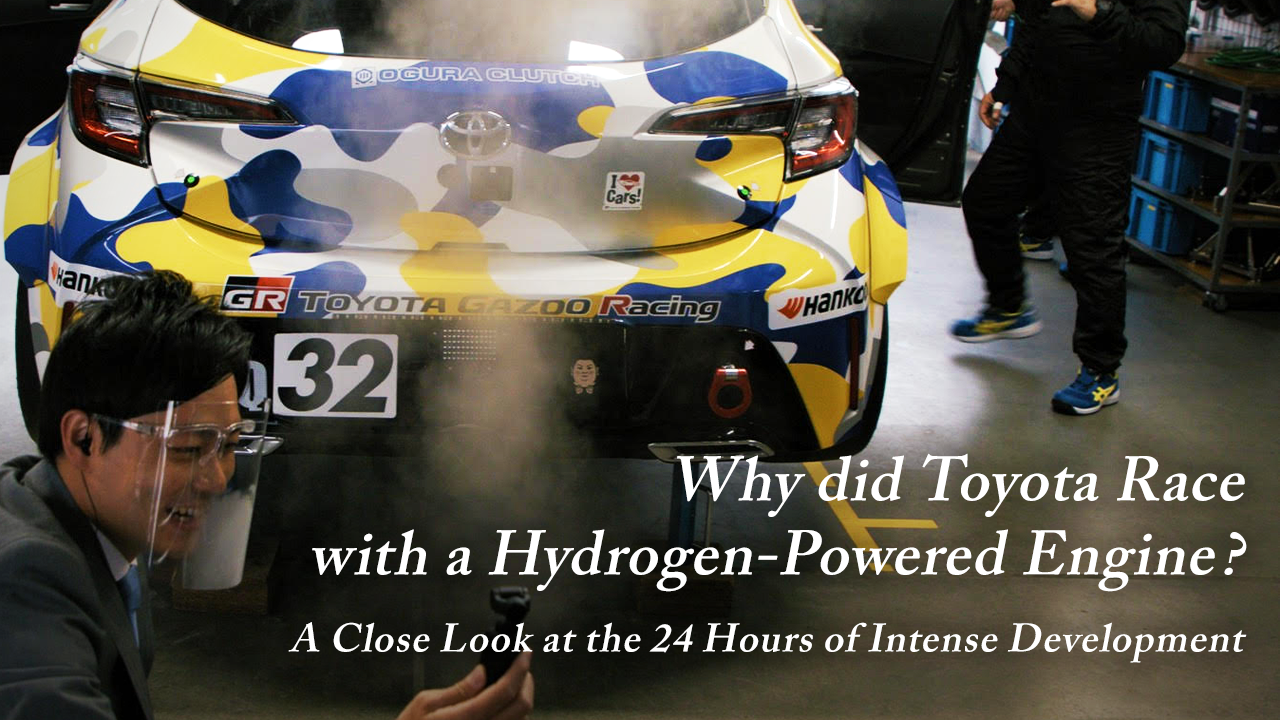
Toyota tackled an endurance race with a hydrogen-powered engine. Why throw this fledgling technology into such a demanding race? Morita took a close look to find out.

The unexpected news came on April 22, 2021: Toyota was developing a hydrogen-powered engine, and would be entering a car equipped with this technology in Round 3 of the 2021 Super Taikyu Series, the Fuji 24 Hour Race, to be held a month later.
(Related article: Why to Race with a Hydrogen Engine Not Yet Ready for Sale)
A hydrogen-powered engine generates energy through the combustion of hydrogen instead of gasoline. While the existing Mirai model also runs on hydrogen, it does so through a chemical reaction that generates electricity, which is then used to drive an electric motor. As the name fuel cell electric vehicle (FCEV) suggests, how the vehicle runs is similar to battery electric vehicles. A hydrogen-powered engine, on the other hand, burns hydrogen directly as fuel. The major difference from gasoline engines is that it emits almost no carbon dioxide (CO2)*.
*Aside from minute quantities of engine oil burned during driving, no CO2 is produced. As in gasoline engines, nitrogen oxide (NOx) is generated because oxygen is involved in the combustion.
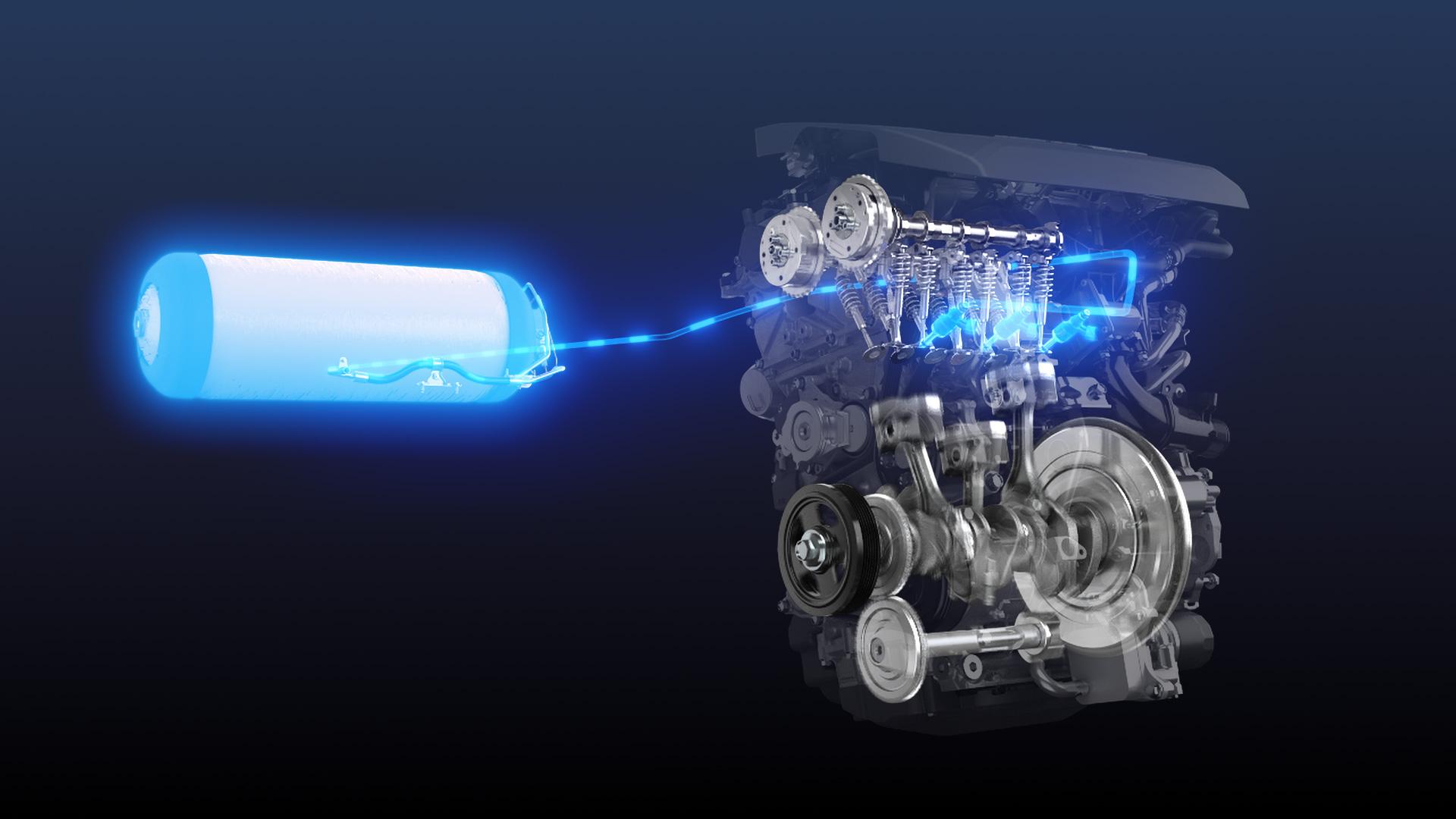
Burning gasoline, diesel, or other fossil fuels produces CO2. When hydrogen is burned, however, essentially all that comes out is water. In other words, the hydrogen-powered engine has a great potential to contribute to carbon neutrality while making use of engine technology that has been refined over the course of many years.
For now, this project remains in the research phase. That has not stopped Toyota from debuting the technology on one of the most grueling stages in motorsports: a 24-hour endurance race. Naturally, this will be the hydrogen-powered engine’s first race appearance in the world. Why did Toyota decide to take on a challenge that borders on recklessness? How will the team fight its way through the race? Toyota Times reporter Kyonosuke Morita closely followed the 24-hour battle at Fuji Speedway.
Expanding paths for carbon neutrality
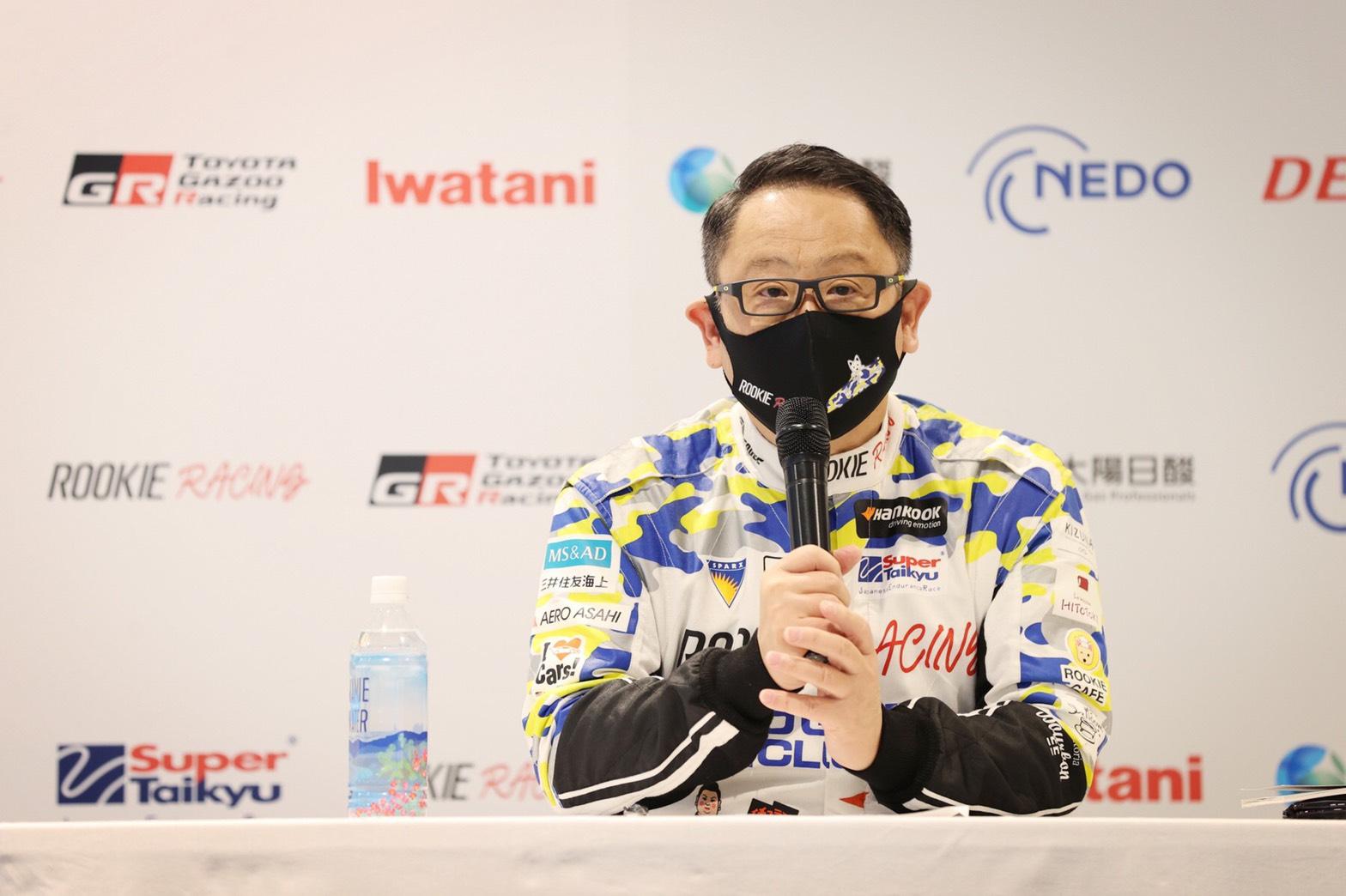
May 22, 2021: Race day. Morita’s first stop was the press conference room, packed with members of the media. Before long, President Akio Toyoda appeared, dressed in his ROOKIE Racing driver’s suit. ROOKIE Racing is a private motorsports team, with Akio as the team owner. As “Morizo”, he also serves as a driver in this 24-hour race.
When asked by a reporter about the significance and his thoughts behind racing the hydrogen-powered engine, Akio immediately responded that “our ultimate goal is carbon neutrality”. Ever since Prime Minister Suga announced the goal of making Japan carbon neutral, as chairman of the Japan Automobile Manufacturers Association, (JAMA) Akio had been calling for more carbon-neutral options.
Akio stressed that pursuing battery electric vehicles (BEVs) as the only option for achieving carbon neutrality would eliminate one million jobs in Japan. Compared to Europe and other regions, Japan’s electricity generation relies more heavily on thermal power. In such circumstances, the energy-intensive production of BEVs would inevitably need to be shifted overseas to avoid emitting large quantities of CO2.
But BEVs are not the only path towards carbon neutrality. Another way involves using "carbon-neutral fuels" such as hydrogen and biofuel. For Japan, having many options for reaching carbon neutrality is important. And now the opportunity has arisen to demonstrate one such option through motorsports. As Akio emphasized, that is the significance of taking part in this race.
So why now? “A great many people have been involved in getting the Corolla’s hydrogen-powered engine up and running,” says Akio. Toyota’s engineers had been toiling away on the research since well before the decision to enter the race. Finally getting the technology race-ready required the combined efforts of many individuals, who continued to refine the hydrogen-powered engine without knowing when it would see the light of day. That is why Akio was determined to “finish the race, whatever it takes”.
Akio:
There’s no telling what’s going to happen. That’s part of racing.
We’re going to use this opportunity of the Super Taikyu to put everything out there for the world to see. I hope you will all stand behind us in this unprecedented effort towards achieving carbon neutrality.
Achieving carbon neutrality with engines
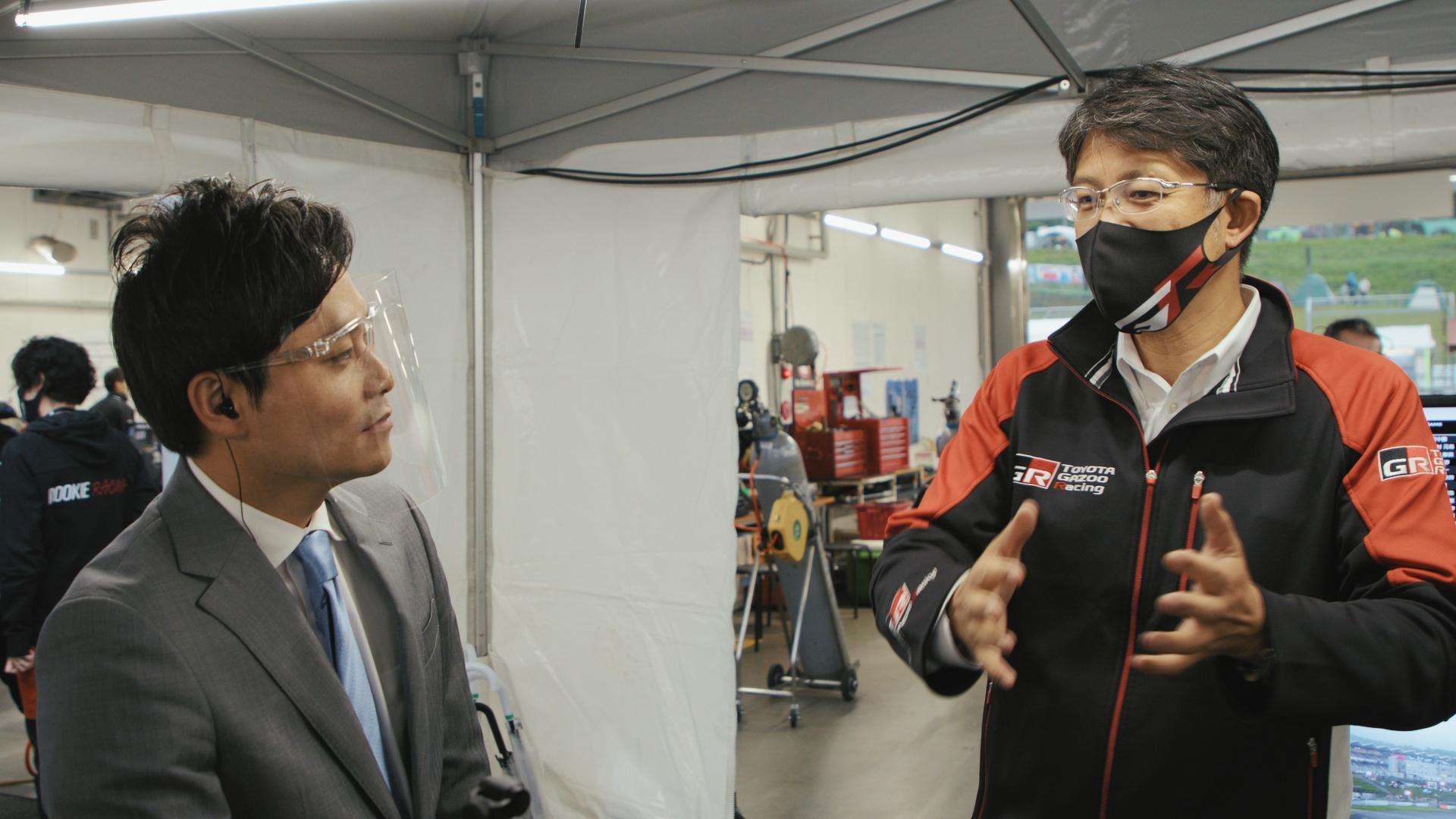
At the press conference, Morita witnessed Akio’s strong determination to attempt something unprecedented in order to help create a hydrogen society. Next, he spoke to GAZOO Racing Company President Koji Sato, who leads the hydrogen-engine project, about the challenge that lay ahead.
Sato began by providing his explanation of the hydrogen-powered engine.
Sato:
A hydrogen-powered car runs by extracting energy from the combustion of fuel stored in its tanks, and in this case that fuel is hydrogen instead of gasoline.
Morita:
Toyota has already released an FCEV Mirai, so many people probably think we already have hydrogen cars out on the road.
Sato:
Although the Mirai also uses hydrogen, it does so by generating electricity from the hydrogen. The Mirai doesn’t actually have an engine. But this car does have an engine, which is fueled by hydrogen.
This means we can use existing engines while replacing the fuel with something that is carbon neutral. We may even be able to launch gasoline-powered cars that can be converted (to hydrogen-powered vehicles) at a later date. This would transform the way cars are made, and right now we’re trying to open the door to that future.
The hydrogen-powered engine emits no CO2 during driving through a completely different approach from BEVs, expanding the paths towards achieving carbon neutrality.
Sato says that, during development, he continued to worry that “engines might cease to exist” and whether “there is only one path towards carbon neutrality”. It was then that Morizo (Akio) eased Sato’s concerns by saying, “If you’re unsure what lies ahead, why not just try?” The result was the team’s entry in this race.
Even so, why throw this technology straight into motorsports, and on top of that, a gruelling endurance race? According to Sato, competing in races speeds up the pace of improvement.
Sato:
Going straight into a 24-hour race brings all the problems to the surface. Then we fix those problems for the next race. Even if a technology is effective in achieving carbon neutrality, we’ll never get there if the development takes too long.
If you want to speed up the process of mastering that technology, motorsports provides a valuable field for agile development.
Motorsports may be seen as a specialized world, but we view it as a vast testing ground. We’re not building a racing car together, we’re conducting an experiment aimed at creating a carbon-neutral society. I think that is important.
What is the white smoke?
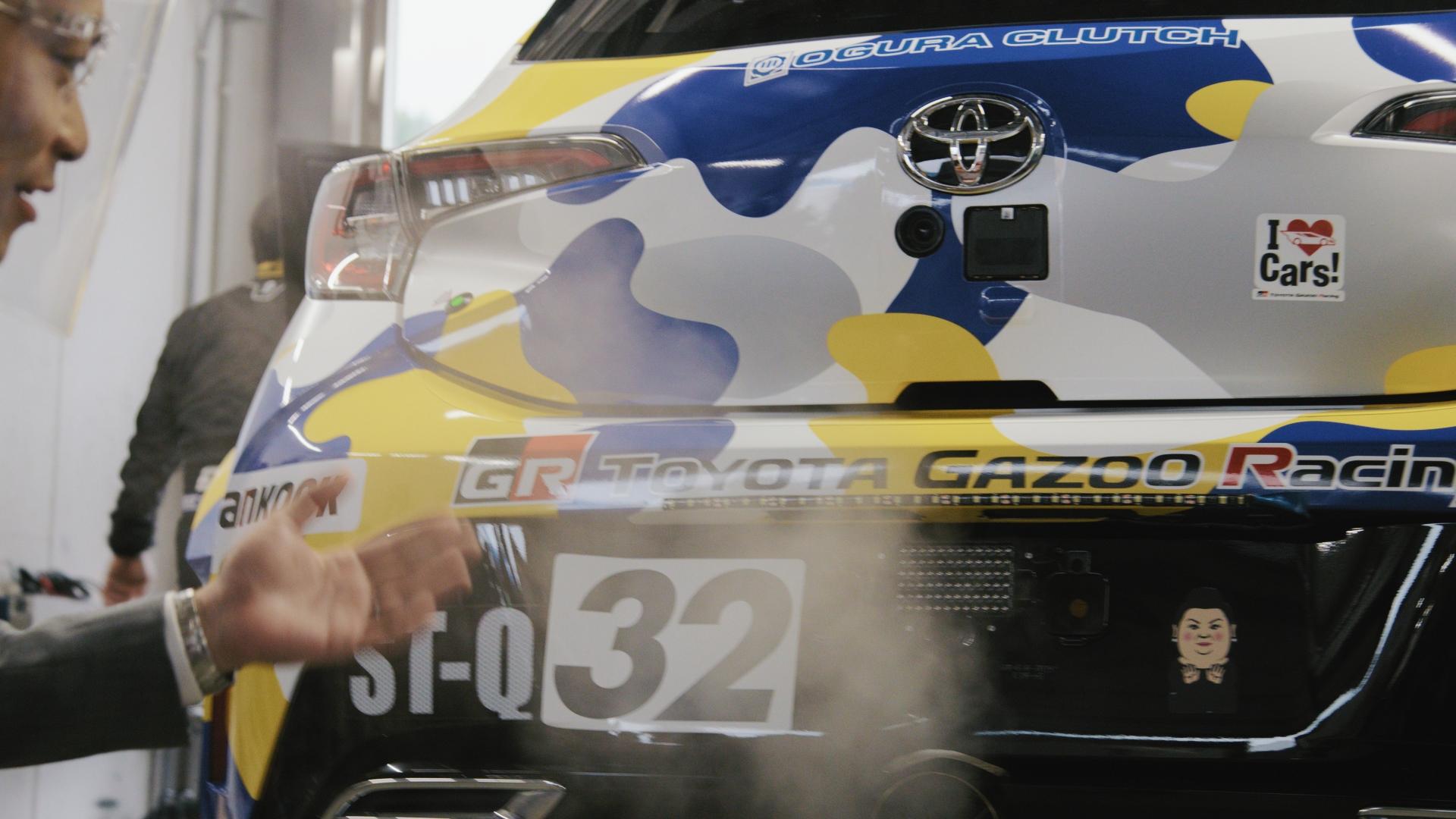
On visiting the pits, Morita finally came face to face with the hydrogen-powered Corolla. Even kitted out in ROOKIE Racing colors, it didn’t look much different from a regular Corolla. Peeking into the rear seats, however, revealed a space packed with hydrogen tanks. To minimize the number of refueling stops during the 24-hour endurance race, the car was loaded with huge hydrogen tanks. Even so, the hydrogen would need to be filled up about once every 30 minutes.
The engine finally roars to life, a deep, powerful rumble reverberating through the pits. “That’s the sound of a hydrogen-powered engine,” exclaims Morita. “Sounds just like a regular engine.”
White smoke rises from the muffler at the rear of the car. What’s this? Morita brings his face closer to breathe in the exhaust. That’s right – burning hydrogen produces only water, meaning this white smoke is nothing more than water vapor.
Morita:
Ah, it’s odorless. Can you see? It’s fogging up my plastic face shield. That’s water vapor.
Keeping the thrill of sports cars alive
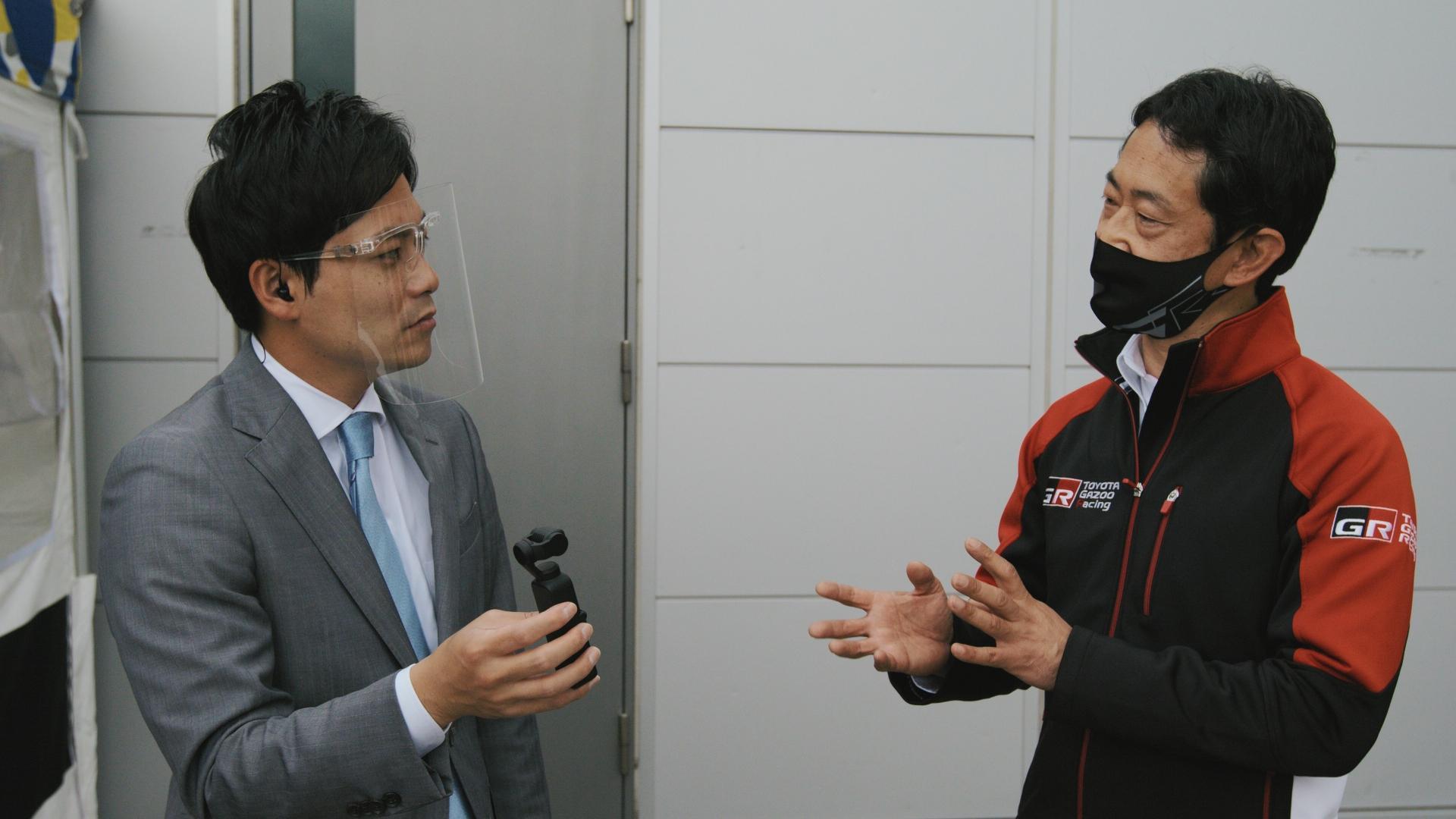
Next, Morita asked Naoaki Ito of the GR Project Operation Division to share the story of the hydrogen-powered engine’s development. Ito recalls the development being spurred by concerns that, a decade or two from now, sports cars may not survive the carbon-neutral age.
“We began exploring the potential of a hydrogen-powered engine because we wanted to retain the thrill and excitement of sports cars,” says Ito. A sparkle in his eye revealed Ito’s genuine love of engines, as he explained how “an engine responds differently depending on the skill or character of the person handling it”.
Ito:
Carbon neutrality seems to have a somewhat negative image, one of moderation and self-restraint, but we want to show that you can do exciting things like this while still achieving carbon neutrality.
As Ito tells it, the unique appeal of engines is their versatility – from large to compact, four-cylinder or V6 – which can determine the character of a vehicle.
Morita also asked about the safety of hydrogen. What did Ito think about the image of hydrogen as dangerous?
Ito:
Gasoline can be dangerous if handled incorrectly, and of course the same is true of hydrogen, as we have experienced firsthand.
At the same time, I don’t think it’s right to say that hydrogen is more dangerous than gasoline. I believe we can offer safe and reliable cars if they are designed and equipped in a way that is suited to hydrogen.
Why are there two hydrogen stations?
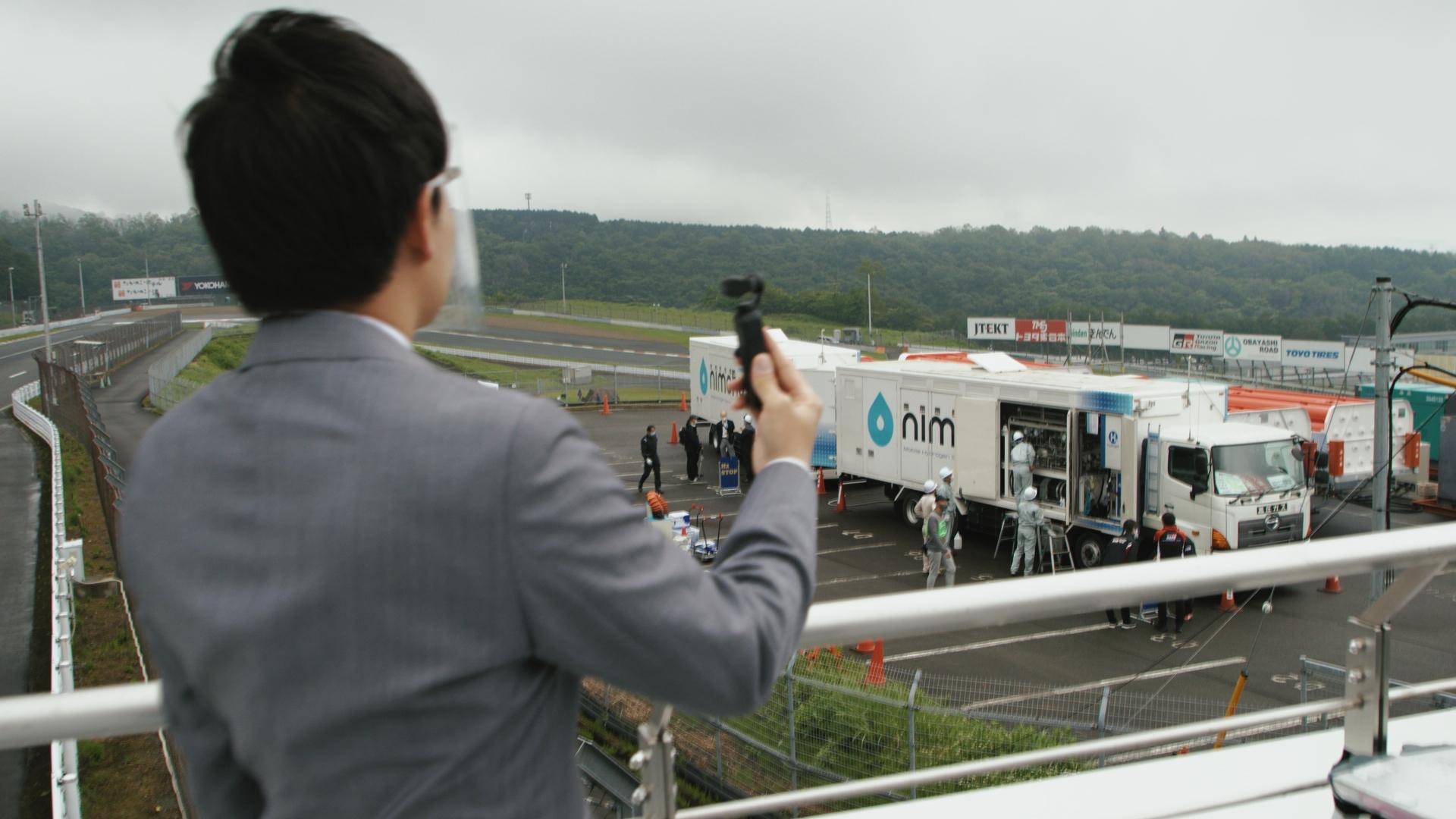
Two massive trucks stand in the space beside the pit area. A sign placed in front of them reads “H2 STOP”. This is where the Corolla will be filled with hydrogen as it battles through the race. Just as the hydrogen-powered engine’s entry in the race marks a world-first, refueling a race car with hydrogen on site is also an unprecedented endeavor. What sort of challenges did this present? Morita posed the question to Yoji Kanie and Masaaki Ichikawa of the GR Project Operation Division and Yutaka Sawada of the Commercial ZEV System Products Development Division.
This hydrogen refueling facility is a joint effort with Toyota’s partners, Iwatani Corporation and Taiyo Nippon Sanso. The aim is to develop infrastructure alongside the car itself. No matter how far the hydrogen-powered engine technology progresses, it won’t have practical value unless cars can access hydrogen. Developing both aspects – the cars and the infrastructure – is vital to achieving a hydrogen society.
Kanie’s background lies in production engineering, which involves constructing plants and establishing processes. For this race, his mission was to “create a process for safely filling hydrogen at the track, which would last only three days”.
In a race, hydrogen must be refilled as quickly as possible. To that end, the team devised a method that uses two mobile hydrogen stations in tandem.
Ichikawa:
We often liken it to blowing up a balloon between two people with good lung capacity. The first person blows it up halfway before running out of breath, then the second takes over to inflate the rest of the way until the balloon is full and good to go. That’s the idea here.
Morita:
Because that’s the fastest way?
Ichikawa:
That’s right.
With a wry smile, Ichikawa recalls how, when he first heard of the 24-hour endurance race, he was sure that meant an appearance in the pre-race parade. He soon realized the car would be competing. From there, the team quickly began discussions with the International Automobile Federation (FIA) and the Japan Automobile Federation (JAF) to create rules for hydrogen refueling. “Realizing that the knowledge and experience we gain will help write the rules for motorsports around the world was extremely exciting,” says Ichikawa.
Green, blue, grey – the three types of hydrogen
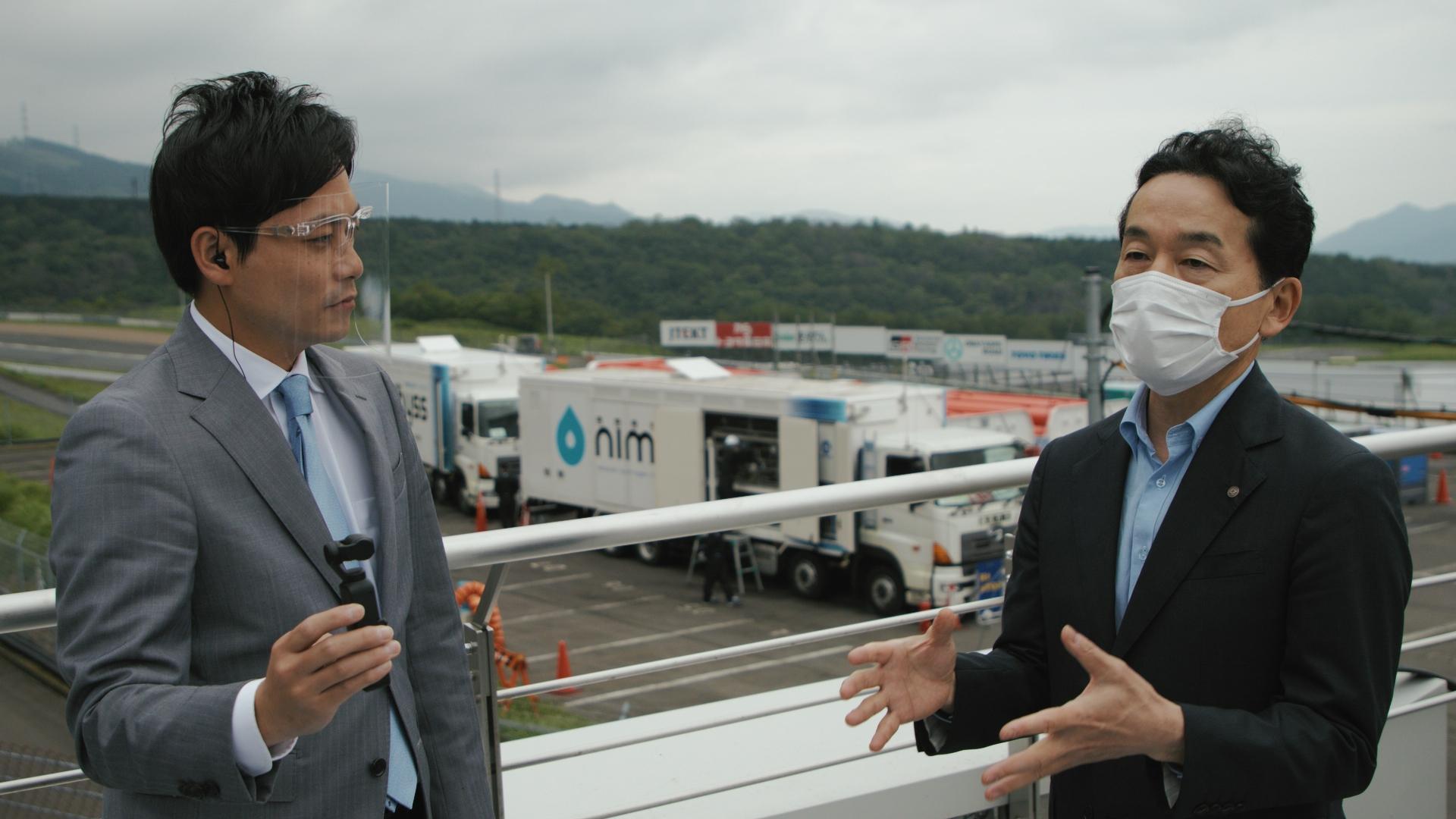
Next, Morita asked Manabu Tsuyoshi, Member of the Board & Managing Officer at Iwatani Corporation, which produces hydrogen and installs hydrogen stations, about the hydrogen to be used in this race.
The hydrogen for this race comes from the Fukushima Hydrogen Energy Research Field (FH2R), one of the world’s largest hydrogen production facilities. Located in the town of Namie, Fukushima Prefecture, the facility uses solar energy to produce hydrogen. For the race, the team brought over hydrogen from FH2R with the mindset that “if we’re going to use hydrogen, let’s make it green”.
Green hydrogen refers to hydrogen made without emitting CO2 during the production process. This is the case for FH2R hydrogen, which is produced using only electricity from solar power.
Hydrogen can also be extracted from fossil fuels, such as methanol and LNG (liquefied natural gas), but this also produces CO2 at the same time. Hydrogen made in this way is known as “grey hydrogen”. Another approach, “blue hydrogen”, involves capturing and storing, or otherwise utilizing, the CO2 that is emitted in the production process. Not all hydrogen is made equal.
Tsuyoshi:
Ultimately, producing hydrogen directly from renewable energy sources, such as wind and solar power is best for the environment because no CO2 is emitted in the process.
Morita:
And that is green hydrogen?
Tsuyoshi:
Yes, green hydrogen.
Morita:
Grey, blue, green. Of these three, this time we’re using green.
Tsuyoshi:
Right.
Starting driver: Kamui Kobayashi
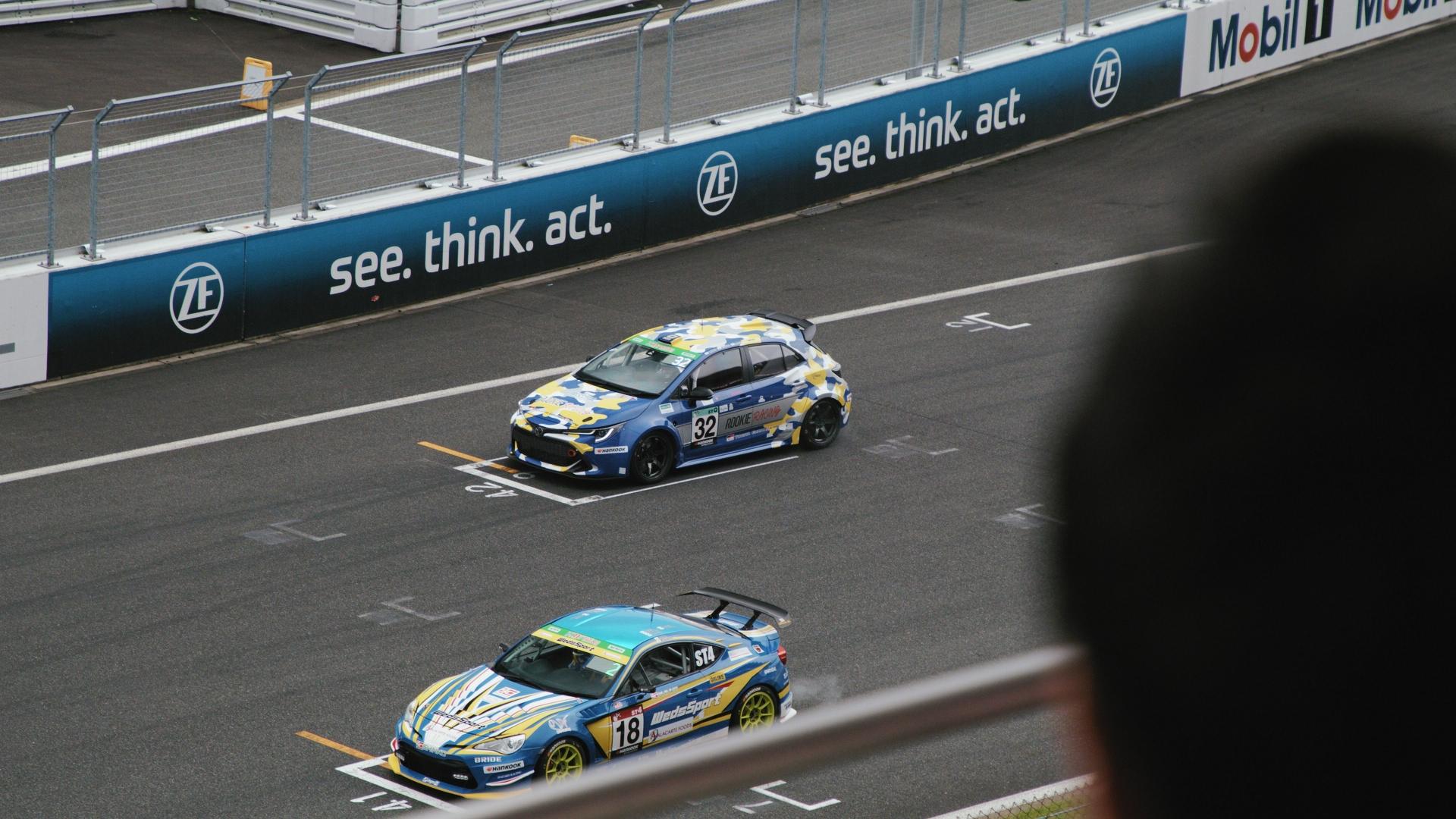
As the 3 p.m. start time neared, Morita found his way to the home straight of Fuji Speedway. The world’s first racing car equipped with a hydrogen-powered engine was finally about to begin its run. At the start signal, the Corolla driven by Kamui Kobayashi took off, billowing white smoke.
Completing its first lap, the ROOKIE Racing Corolla presented a valiant figure as it streaked safely back down the home straight, where an excited Morita watched on.
Morita:
The sound certainly holds its own against the other engines! Yet it does sound a little different from the gasoline-engine cars. Is that the sound of hydrogen?
As the car returned to the pits, Morizo jumped on board to take over from starting driver Kamui Kobayashi. After a smooth refuel in the hydrogen-filling zone, he returned to the track with the engine’s gallant roar.
A technology to pursue properly
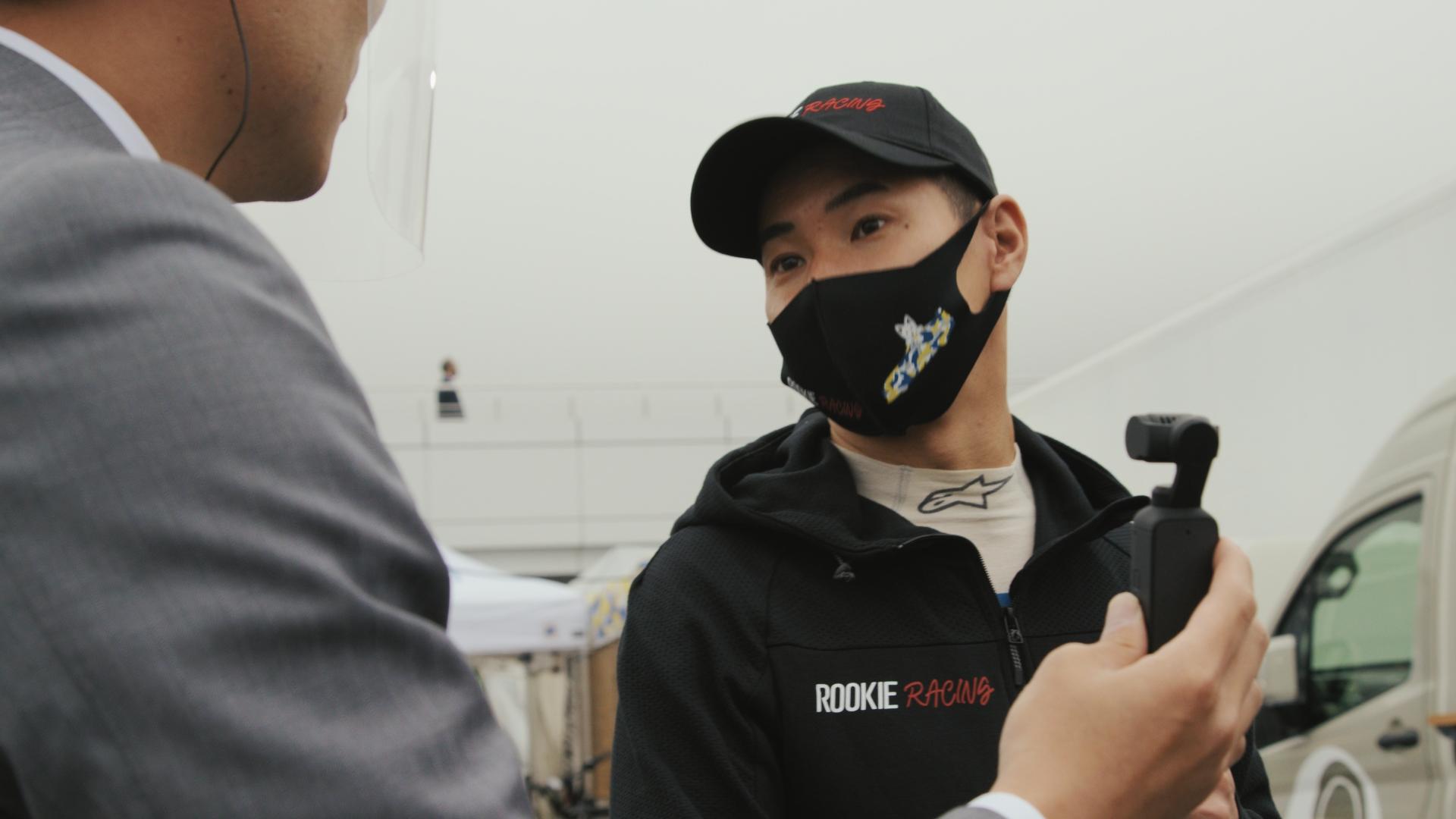
Morita immediately interviewed Kamui Kobayashi, fresh from his stint behind the wheel. In fact, it was Kamui who provided the catalyst for the hydrogen-powered engine’s entry into the race. A ride in a hydrogen-engine test vehicle while visiting Toyota’s training facility with Akio last year made him instinctively feel that this was “the only way forward”. From there, speaking with many people and researching hydrogen for himself convinced Kamui that this technology was “something we should pursue properly”.
So why did the team decide to leap straight into motorsports? In response to Morita's question, Kamui gave the example of hybrid technology. Despite being generally seen as “eco-friendly”, if used effectively hybrid vehicles could actually be more powerful than gasoline-engine cars. Toyota’s own results when competing in the World Endurance Championship (WEC) with a hybrid car have been dominant, even claiming the course record for the 24 Hours of Le Mans, a race boasting more than 100-years of history.
Similarly, seeing the hydrogen-powered engine become merely an eco-friendly technology would count as a missed opportunity for Kamui. He hopes that broad exposure through motorsports will create a sporty image that can then be passed on to many types of cars.
A few hours into the race, Morita visits the pits to get a status update from the GR Project Operation Division’s Naoyuki Sakamoto. As it turns out, the issue of abnormal combustion that accompanies hydrogen-powered engines is starting to rear its head. The team is analyzing data in real-time to pin down the cause while the car remains on the track.
Morita:
Are these issues something that would not have come up during the development process?
Sakamoto:
This is a perfect example of seeing things happening firsthand in the genba.
Morita:
You mean the car is being improved directly through motorsports?
Sakamoto:
Yes. There is still much that we don’t understand completely.
(…)
There must have been something that resonated with everyone involved, because we all share the same mindset. The idea of a carbon-neutral engine must have struck a chord with everyone.
Pushing the limits because it’s “okay to fail”
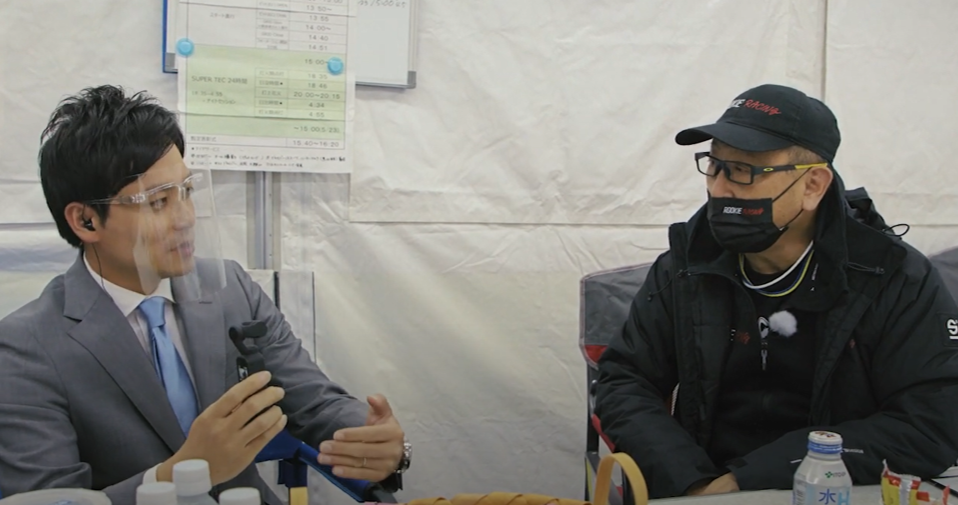
Morita also spoke with Morizo after his successful first run. “It felt no different from driving a gasoline-powered car,” reflected Morizo. The presence of the hydrogen only became obvious during refuelling, which even attracted the attention of the cameras, a level of interest that Morizo found surprising.
Morita:
When entering a new car in a 24-hour race, there is a lot of room for things to go wrong, isn’t there?
Akio:
In my case, people would often say in their mind, “Let’s see how good you can be”, and if I fail they’d say, “See what happened.” That’s the kind of environment I’ve experienced. And I think that has created this mindset of moving forward by taking action.
That said, I can’t talk about taking responsibility in the same way that I did when I became president eleven years ago, because the people around me are different now. The people I work with now push right up to the verge of failure, and that’s because I tell them that it’s okay to fail. If I said “don’t mess up”, they would take a margin to avoid failure. That’s how big companies work.
Fifteen hours into the race, after an intense night the new day dawns with nine hours remaining. With the team having apparently run into trouble in the middle of the night, Morita talks to driver Takamitsu Matsui to find out what happened.
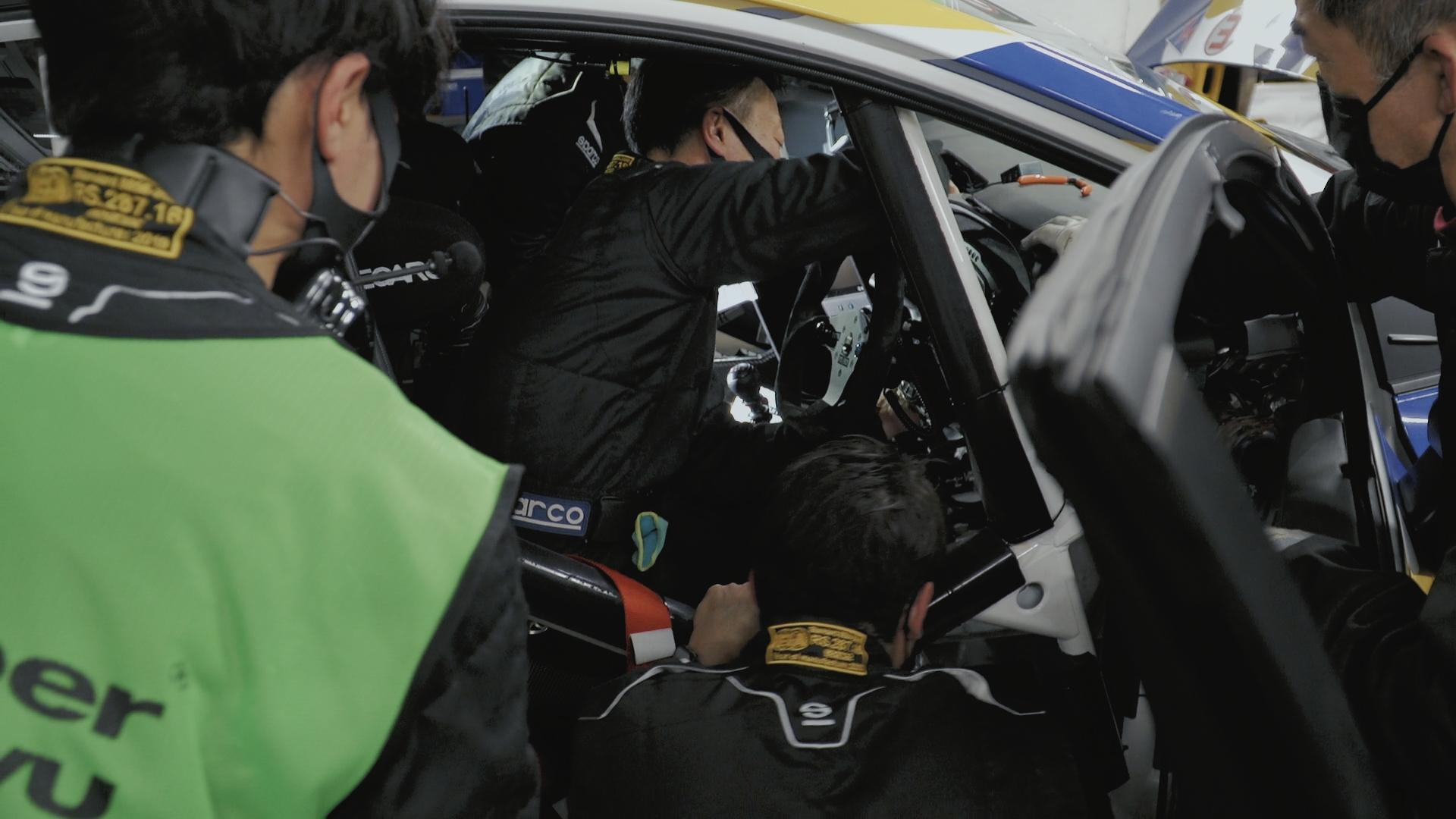
Morita:
I heard the car had to stop last night due to trouble.
Matsui:
As I was turning a corner, there was an electrical problem and the power dropped out. When I rebooted the system it came back on, so I took the car straight into the pit and we set about repairing.
Kamui Kobayashi and the other drivers who were there got involved, and Morizo came to spur us on. It was amazing to see everyone, not just the mechanics, working to fix the car.
Enjoying the hydrogen-powered engine’s responsiveness
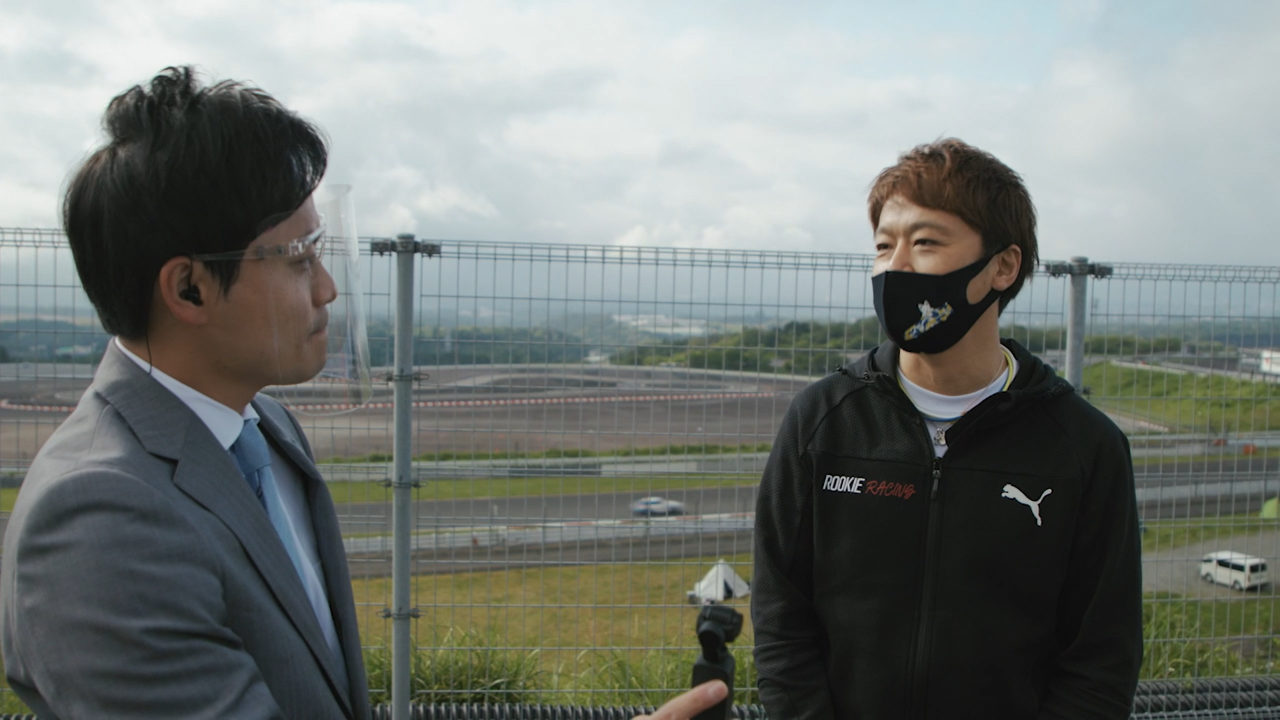
Driver Masahiro Sasaki explained the differences between the hydrogen- and gasoline-powered engines that can only be felt from behind the wheel.
Sasaki:
Hydrogen’s combustion speed being six to seven times faster gives you the advantage of a more responsive accelerator. The responsiveness helps make the car very satisfying and enjoyable to drive.
Morita:
You mean, “fun to drive”?
Sasaki:
That’s exactly right!
Morita also interviewed driver Takuto Iguchi about his impressions of the hydrogen-powered engine.
Morita:
Looking at the smile on your face, I can tell that you’re enjoying yourself.
Iguchi:
The goal of carbon neutrality is always on my mind, but aside from that it’s just really fun to drive while enjoying the sound of the engine.
Finishing the 24 hours in style
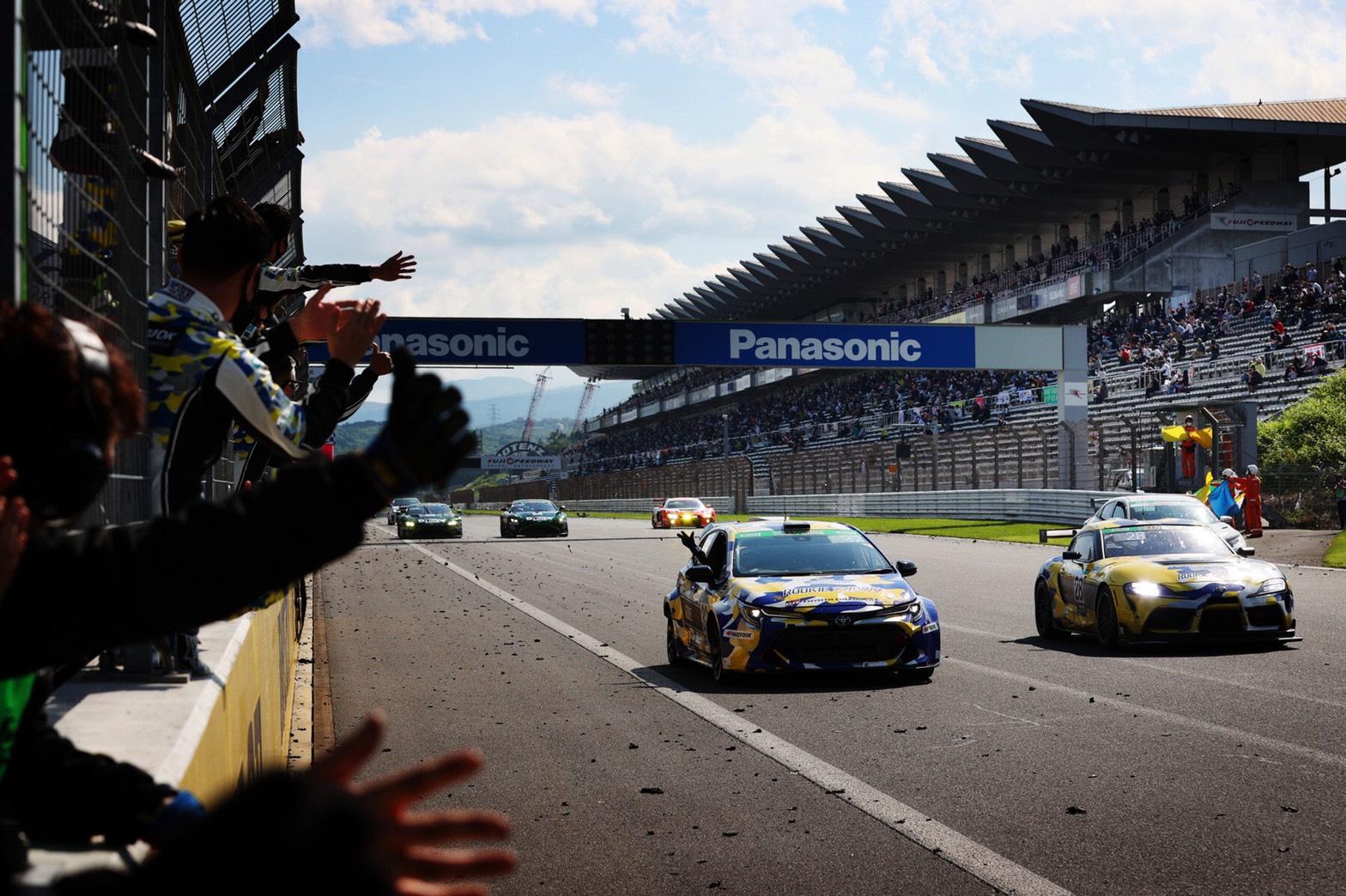
With 25 minutes remaining, Morizo finally heads out for the final stint. After sharing fist bumps with everyone on the scene, including Morita, he climbs into the Corolla. The entire crew watches the Corolla set out from the pits with the same rumble of the engine as 24 hours earlier.
In the final minute, the drivers and team members assemble along the home straight to greet the hydrogen-powered Corolla as it completes the 24 hours in style. An overjoyed President Sato embraces driver Kamui Kobayashi.
Morita:
You seemed ecstatic.
Sato:
Well, it was a tough road to this point. I’m glad that everyone’s efforts were rewarded. I’m truly grateful to all the many people who helped us. Thank you.
Wiping away his tears that were welling up, Sato spoke of his gratitude for everyone who had worked so hard alongside him. Even Morita couldn’t help but be moved to tears by the significance of the moment.
Morita:
You get a true sense of the demanding journey to this point, and the obstacles faced in battling through the 24 hours. Given everything the team has overcome to get here, I feel like I completely understand why President Sato couldn’t hold back his tears just now.
Creating the future through “purposeful passion and action”
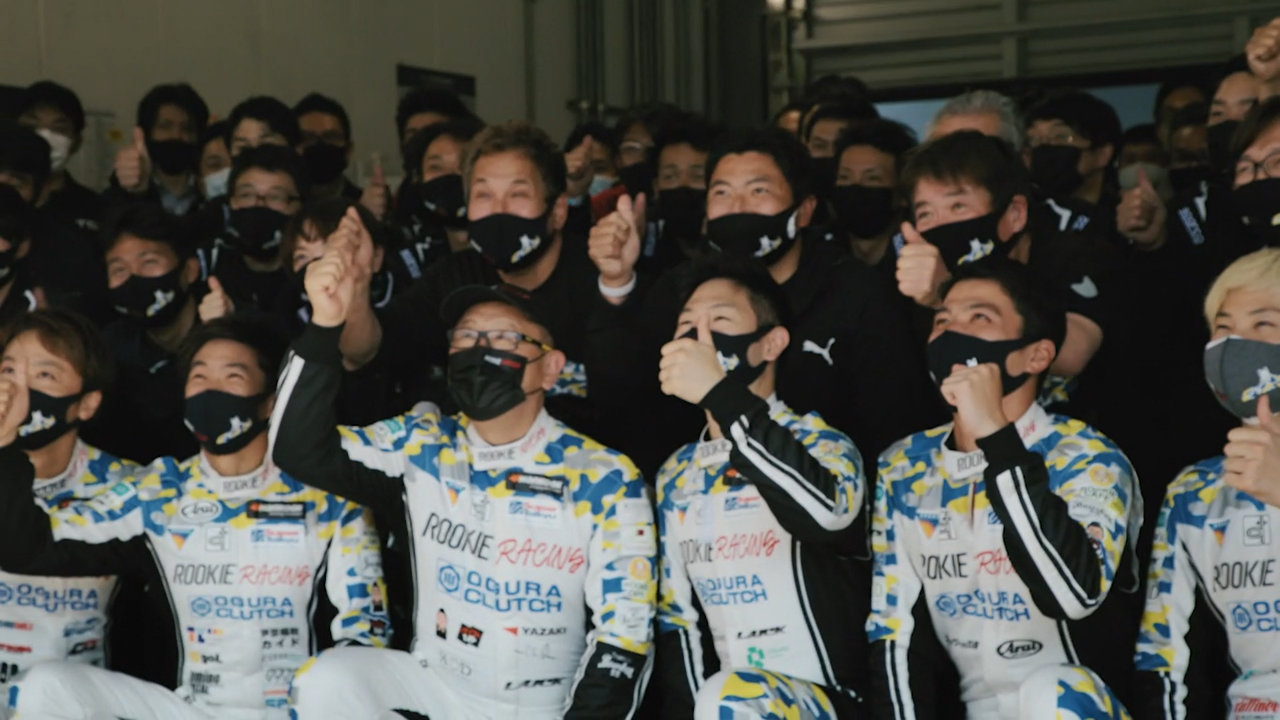
In completing the 24-hour endurance race with a hydrogen-powered engine, the team had realized a tremendous, world-first undertaking. Every member glowed with a sense of accomplishment and fulfillment. Standing before them, Akio – or rather, Morizo – summed up the challenge they had overcome.
Akio:
In 24 hours we covered a distance of over 1,500km, equal to two round trips between Tokyo and Osaka. All of us have come here today as representatives of the 5.5 million people (involved in Japan’s automotive industry), working together across company lines to expand the paths for future carbon neutrality through the use of hydrogen-powered engines.
I believe that a carbon-neutral future will be created through purposeful passion and action. Before the many people who participated and watched this Super Taikyu, you have demonstrated what such action looks like.
I promise to continue taking such action, as a sign of my gratitude to all of you. Thank you so much for your hard work today! Make sure you get a good sleep!
A leap forward for the hydrogen-powered engine
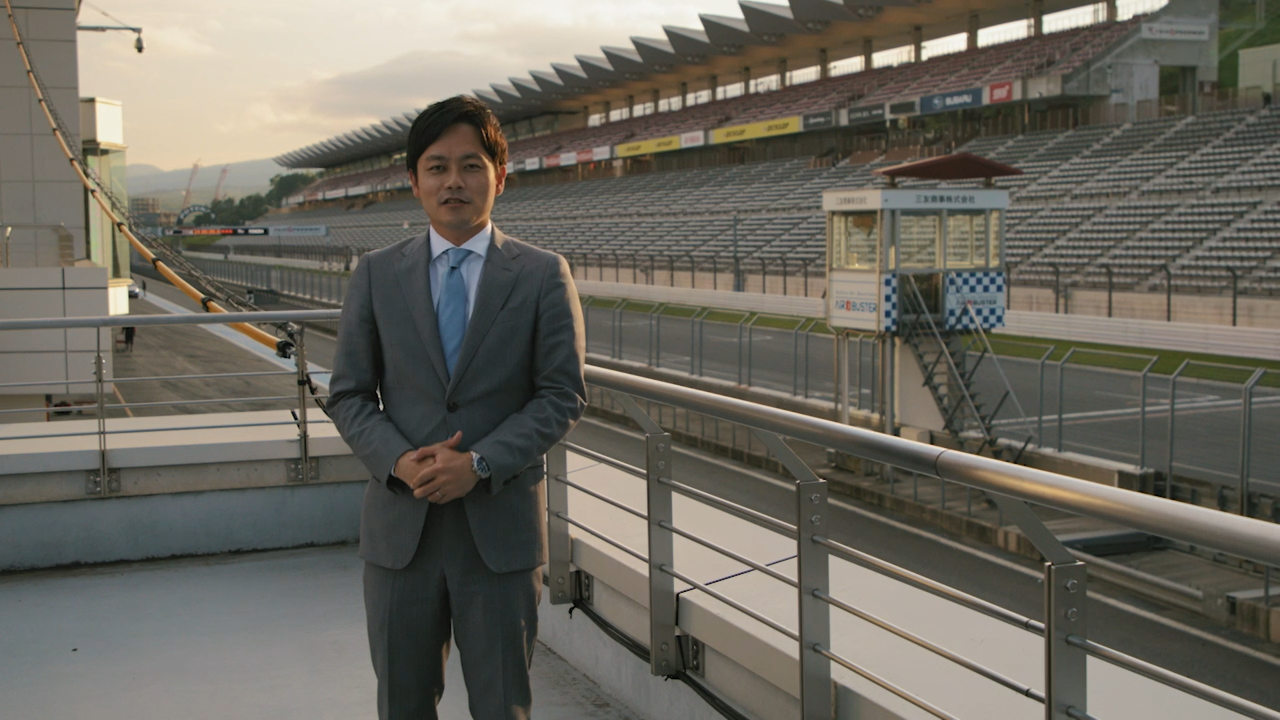
With the race over, Morita wrapped up his coverage of these 24 hours. Until the press briefing on April 22, he had not even heard the words "hydrogen-powered engine", and came here unsure exactly what it meant to improve a car through motorsports. In finding out, Morita captured every part of the hydrogen journey, from making and transporting to using and watching it in action.
In covering the race, many things became clear. When Morizo crossed the finish line, everyone from the engine’s developers to the mechanics hugged and shared in the joy of that moment. Here was the “purposeful passion and action” that was needed to create our future through the new technology of hydrogen-powered engines.
Morita:
This felt like the historic moment when a new technology, the hydrogen-powered engine, came into the world and took a leap forward towards our future. I feel very fortunate to have witnessed it firsthand, and I’ll leave Fuji Speedway basking in the afterglow of that good fortune. Thank you for watching.

